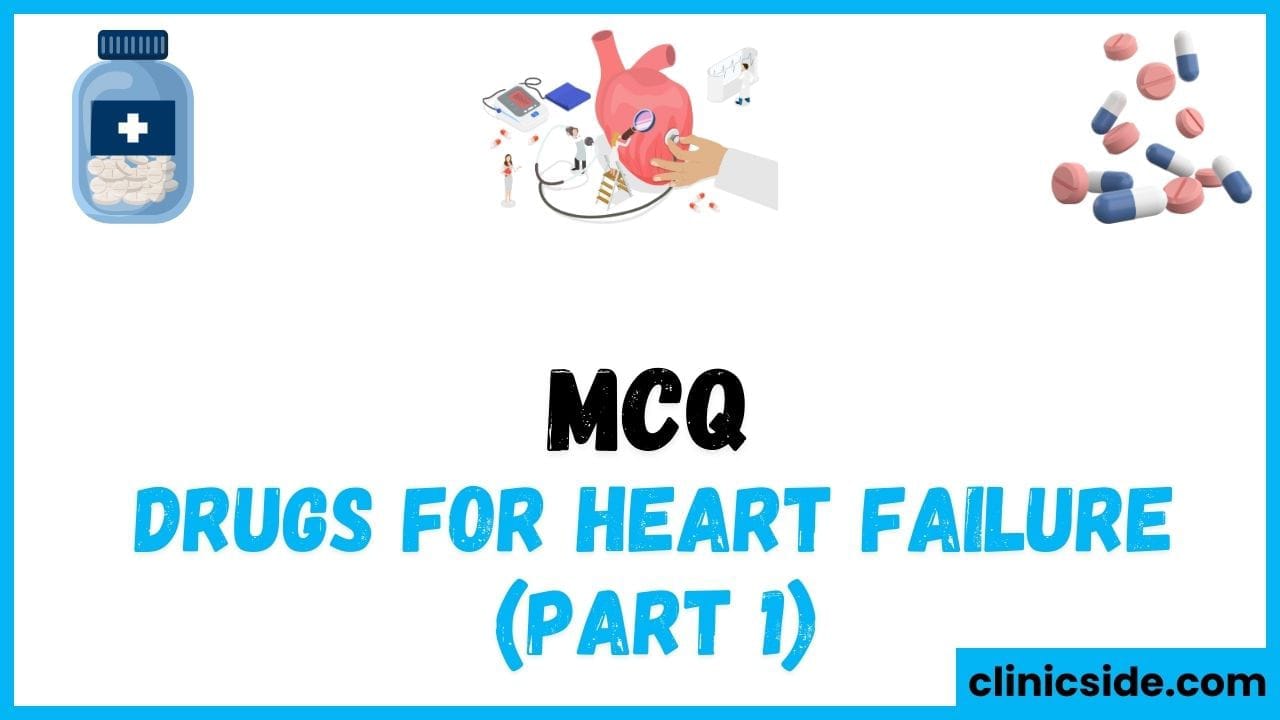Quiz
Available options: 1 to 20
Overview of Key Medications in Heart Failure Treatment
First-Line Therapies for Chronic Heart Failure
ACE inhibitors serve as the primary treatment for chronic heart failure due to their ability to reduce mortality, ease symptoms, and slow disease progression. These medications, such as enalapril and lisinopril, work by blocking the action of angiotensin II, a substance that contributes to vasoconstriction and fluid retention. In addition to ACE inhibitors, furosemide, spironolactone, and digoxin are used to manage symptoms, although they do not directly reduce mortality. Furosemide is a loop diuretic used for fluid overload, while spironolactone targets aldosterone to prevent cardiac remodeling.
The Role of Beta-Blockers in Heart Failure
Beta-blockers, particularly carvedilol, play a crucial role in the management of heart failure by reducing mortality and hospitalizations. These drugs block the effects of the sympathetic nervous system, decreasing heart rate and the workload on the heart. Carvedilol is preferred over other beta-blockers, such as propranolol and atenolol, because it has additional antioxidant and anti-inflammatory properties that offer extra benefits for heart failure patients.
How Digoxin Helps in Heart Failure
Digoxin works by inhibiting the Na+/K+-ATPase pump, increasing the availability of calcium within cardiac cells, which enhances contractility. It is especially beneficial for patients with heart failure complicated by atrial fibrillation. However, digoxin has a narrow therapeutic index, meaning its use must be carefully monitored to avoid toxicity, which can cause side effects like bradycardia and arrhythmias.
Use of Diuretics in Managing Fluid Overload
Diuretics are essential for relieving fluid overload in heart failure patients. Furosemide, a loop diuretic, is the most commonly used for managing conditions like pulmonary and peripheral edema. It works by promoting the excretion of sodium and water. Spironolactone, a potassium-sparing diuretic, is also used, particularly for heart failure with reduced ejection fraction (HFrEF). Spironolactone helps reduce fluid retention and has the added benefit of blocking aldosterone, although it can lead to hyperkalemia, which requires monitoring.
Medications That Reduce Mortality in Heart Failure
ACE inhibitors and ARBs, such as valsartan, are essential in reducing mortality in heart failure patients. These drugs help relax blood vessels, lower blood pressure, and ease the heart’s workload. ACE inhibitors are particularly effective in preventing heart failure progression and reducing the need for hospitalizations. ARBs offer similar benefits and are an alternative for patients who experience side effects, such as coughing, from ACE inhibitors.
Managing Hyperkalemia with Spironolactone
Spironolactone, an aldosterone antagonist, is widely used in heart failure to manage fluid retention and reduce mortality. While effective, it carries the risk of hyperkalemia, which can lead to dangerous arrhythmias. Therefore, patients on spironolactone must have their potassium levels closely monitored, especially if they have impaired kidney function or are taking other medications that affect potassium levels.
Improving Cardiac Function with Digoxin
Digoxin is used in heart failure to improve cardiac contractility by increasing intracellular calcium. This is particularly helpful for patients with systolic heart failure. However, because of the risk of toxicity, it is essential to monitor digoxin levels closely to avoid side effects like bradycardia and nausea, which can result from high blood concentrations.
Combination Therapy with Sacubitril and Valsartan
The combination of sacubitril and valsartan (Entresto) has become a leading treatment for heart failure with reduced ejection fraction (HFrEF). Sacubitril inhibits neprilysin, an enzyme that breaks down beneficial natriuretic peptides, while valsartan blocks the effects of angiotensin II. Together, they reduce fluid buildup, improve survival rates, and prevent harmful heart remodeling, making this combination therapy an essential tool in advanced heart failure management.
Alternatives with Hydralazine and Isosorbide Dinitrate
For patients who cannot tolerate ACE inhibitors or ARBs, hydralazine combined with isosorbide dinitrate offers an effective alternative. Hydralazine works by dilating arteries, while isosorbide dinitrate reduces venous return to the heart, decreasing its workload. This combination therapy is particularly beneficial for African American patients, who have shown improved outcomes with this regimen.
Potential Side Effects and Monitoring in Heart Failure Medications
Medications used to treat heart failure come with potential side effects that require careful management. Spironolactone can lead to gynecomastia, while digoxin can cause bradycardia and toxicity. Milrinone, a phosphodiesterase inhibitor, is used for acute heart failure but can increase the risk of arrhythmias. Regular monitoring of kidney function, electrolytes, and drug levels is crucial to minimize adverse effects and optimize the therapeutic benefits of these medications.
In summary, these medications are integral to the management of heart failure, each targeting specific aspects of the disease. By carefully selecting and monitoring treatment, healthcare providers can significantly improve outcomes and quality of life for heart failure patients. Regular assessments and adjustments are key to effective long-term management of this chronic condition.





